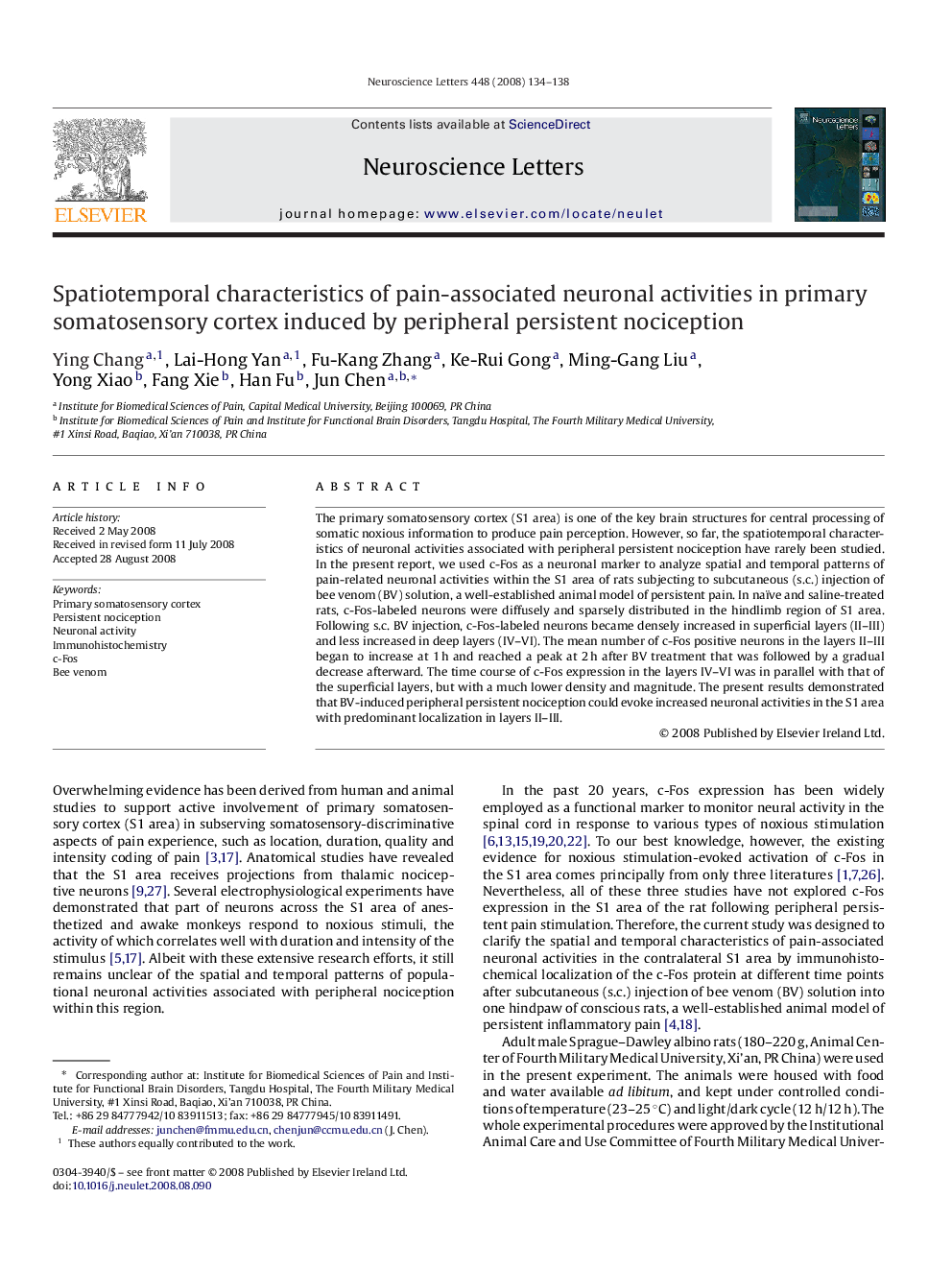| Article ID | Journal | Published Year | Pages | File Type |
|---|---|---|---|---|
| 6285682 | Neuroscience Letters | 2008 | 5 Pages |
Abstract
The primary somatosensory cortex (S1 area) is one of the key brain structures for central processing of somatic noxious information to produce pain perception. However, so far, the spatiotemporal characteristics of neuronal activities associated with peripheral persistent nociception have rarely been studied. In the present report, we used c-Fos as a neuronal marker to analyze spatial and temporal patterns of pain-related neuronal activities within the S1 area of rats subjecting to subcutaneous (s.c.) injection of bee venom (BV) solution, a well-established animal model of persistent pain. In naïve and saline-treated rats, c-Fos-labeled neurons were diffusely and sparsely distributed in the hindlimb region of S1 area. Following s.c. BV injection, c-Fos-labeled neurons became densely increased in superficial layers (II-III) and less increased in deep layers (IV-VI). The mean number of c-Fos positive neurons in the layers II-III began to increase at 1Â h and reached a peak at 2Â h after BV treatment that was followed by a gradual decrease afterward. The time course of c-Fos expression in the layers IV-VI was in parallel with that of the superficial layers, but with a much lower density and magnitude. The present results demonstrated that BV-induced peripheral persistent nociception could evoke increased neuronal activities in the S1 area with predominant localization in layers II-III.
Keywords
Related Topics
Life Sciences
Neuroscience
Neuroscience (General)
Authors
Ying Chang, Lai-Hong Yan, Fu-Kang Zhang, Ke-Rui Gong, Ming-Gang Liu, Yong Xiao, Fang Xie, Han Fu, Jun Chen,
